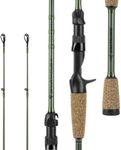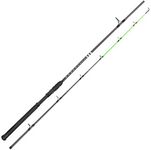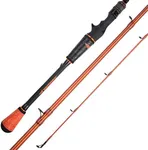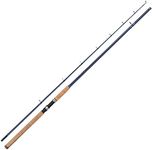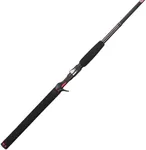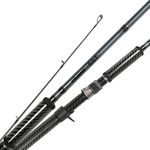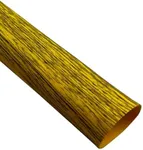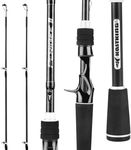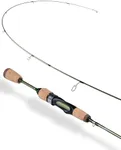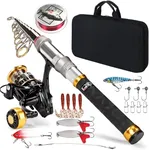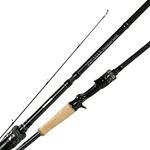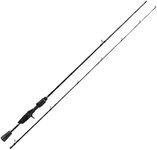Buying Guide for the Best Casting Rods
Choosing the right casting rod can significantly enhance your fishing experience. The right rod will depend on the type of fishing you plan to do, the species you're targeting, and your personal preferences. Understanding the key specifications of casting rods will help you make an informed decision and ensure you get the best fit for your needs.Rod LengthRod length is the measurement from the rod's tip to the butt. It affects casting distance, accuracy, and leverage when fighting fish. Shorter rods (6-7 feet) are more accurate and better for close-quarters fishing, while longer rods (7-9 feet) allow for longer casts and are ideal for open waters. Choose a length based on where you'll be fishing and the type of fish you're targeting.
Rod PowerRod power refers to the rod's resistance to bending under load. It ranges from ultra-light to extra-heavy. Light power rods are suitable for small fish and finesse techniques, while heavy power rods are designed for larger fish and heavy lures. Match the rod power to the size of the fish you expect to catch and the weight of the lures you'll be using.
Rod ActionRod action describes how much and where a rod bends when pressure is applied. Fast action rods bend mostly at the tip, providing quick hook sets and sensitivity. Moderate action rods bend more towards the middle, offering a balance of sensitivity and casting distance. Slow action rods bend throughout the length, ideal for casting light lures and providing a more forgiving experience. Choose the action based on your fishing style and the type of lures you use.
MaterialCasting rods are typically made from graphite, fiberglass, or a composite of both. Graphite rods are lightweight, sensitive, and provide excellent performance, making them ideal for experienced anglers. Fiberglass rods are more durable and flexible, suitable for beginners and those targeting larger fish. Composite rods offer a balance of both materials' benefits. Consider your experience level and the fishing conditions when selecting the material.
Handle TypeThe handle type affects comfort and control. Handles are usually made from cork or EVA foam. Cork handles are lightweight, sensitive, and provide a traditional feel, while EVA foam handles are more durable and resistant to wear. Split-grip handles reduce weight and improve balance, while full-grip handles offer more comfort for extended use. Choose a handle type that feels comfortable in your hand and suits your fishing style.
GuidesGuides are the rings along the rod that direct the fishing line. They can be made from various materials like stainless steel, ceramic, or titanium. Quality guides reduce friction, improve casting distance, and prevent line wear. More guides generally mean better line control and sensitivity. Ensure the guides are well-aligned and durable, especially if you plan to use braided lines.

